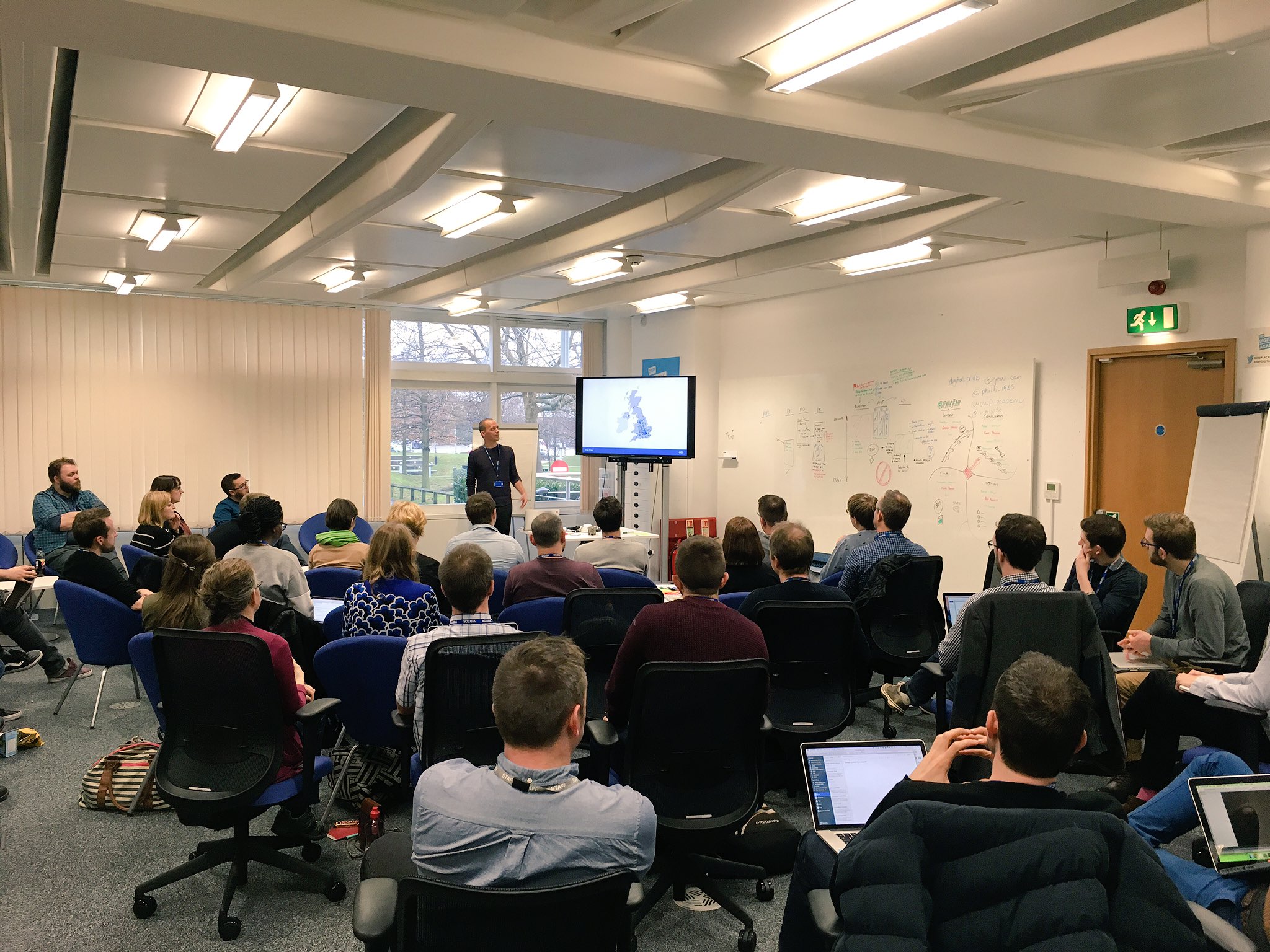
Last week we organised a show and tell in Leeds for people working on design systems in government.
By ‘design systems’ I mean frontend frameworks, style guides, pattern libraries and so on.
The aims of the day were to:
- give everyone a chance to share their work
- highlight the common challenges we all face
- agree to work together to meet those challenges
Many of us have chatted online before, but it was great to have us all in a room together for the first time. There was a real sense of excitement about what we might achieve together in 2017.
The presentations
Here’s a brief rundown of what we saw:
- Paul Smith from DWP showed the component library they’ve been working on - it’s built using Fractal, an open source component documentation tool
- Andy Mantell from Land Registry travelled all the way from Plymouth to show us the component build tool he wrote - it incorporates visual regression testing, so you can automatically check that new CSS hasn’t visually affected other components
- Gavin Wye, Ben Chidgey and Jenny Hodgson from HMRC told us about a recent patterns inventory they conducted of 60 HMRC services (1,000 screens worth), and their plans for managing patterns in their department - they’re also working on a component library using KSS Node
- Chris Taylor from Home Office showed how they used Trello to capture all their patterns - they’ve now started documenting them, complete with Sketch templates
- Finally, Robin Whittleton from GDS talked about GOV.UK Frontend, the new frontend framework we’re building to replace the 3 apps you currently have to use - we wrote about GOV.UK Frontend in more detail in this blog post.
Emerging themes
There were a lot of common themes across the show and tells.
Some of these were:
- frontend development is still sometimes perceived as a lightweight version of backend development, rather than a discipline in its own right
- we’re all reaching a similar level of maturity in this area at about the same time, which means we’re ready to start working more collaboratively
- there’s an emerging idea that design patterns exist at the service, department or government level - we need a lightweight model for identifying useful patterns and promoting them up the levels
- some departments want to create their own design assets, but as a group we’re keen to work together on a cross-government, federated design system
Towards a more federated design system
As you can see from the points above, it became clear on the day that we’re ready to move to a more collaborative way of working.
EightShapes co-founder Nathan Curtis has written with great clarity about the different team models you can use to scale a design system.
He describes 3 models:
- solitary: a single person or team makes their design assets available for others to use, but doesn’t formally support them
- centralised: a dedicated team is tasked with making design assets for others, and making sure that they use them
- federated: multiple teams build and use a shared collection of design assets together
All of these may be familiar to you, especially if you’ve worked in large organisations. In government right now we mainly have a mixture of the first 2.
The big disadvantage of a centralised model is that it doesn’t scale for very large organisations. Users of the design system have to wait for the centralised team to provide the patterns they need. More often than not these users end up developing their own patterns in isolation.
In a federated model people get to develop their own patterns and contribute them back to the main collection, ensuring that everyone gets to benefit from them. This is what we want to move towards.
What’s next
In January we’ll be kicking off a short discovery project into what teams and departments would need from GDS in order to be able to work in this way.
As GOV.UK Frontend moves from alpha to beta in the new year we expect it to become the focal point for a new, more federated design system for government.
Follow Tim on Twitter and don't forget to sign up for email alerts.
